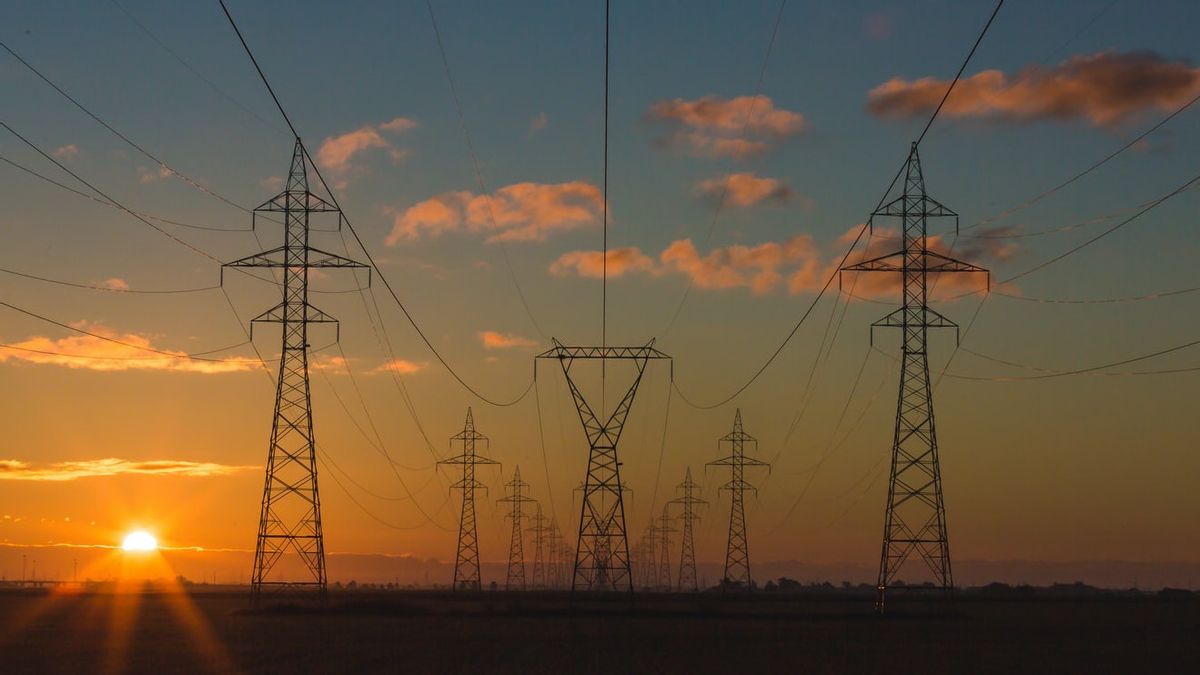JAKARTA - Recently, people have been complaining about swelling electricity bills during work from home (WFH). The community estimates that there will be an increase in electricity rates secretly or that there is a cross subsidy applied to users of 450 VA and 900 VA power. However, this was denied by PT PLN (Persero).
PLN Senior Executive Vice President for Business and Customer Service Yuddy Setyo Wicaksono said there were three things that caused customer electricity bills to increase in April and May accounts. One of them, due to the imposition of large-scale social restrictions (PSBB) which caused the community to undergo WFH.
"The recording of WFH has resulted in an increase in electricity consumption for some households. I say that not all households have increased, only some have. Why is it going up? Because WFH all family members are at home," he said, in a virtual discussion, Monday, June 8. .
Yuddy explained that when the WFH policy was implemented, which used to be electricity consumption from evening to night, now it has changed longer from morning to night. This is because all family members carry out activities that were initially carried out outside the home to be carried out at home.
"Now, when WFH starts in the morning, afternoon, evening, 24 hours of people's activities are at home. This is what causes us not to" feel "using large consumption. Even though the time to use electricity is quite long during WFH," he explained.
Then, the second cause is that May also coincides with the moment of the month of Ramadan. Where the community will start their activities earlier.
"We know that in May there is Ramadan. We have data in Ramadan that compared to the previous month, there was an increase in electricity consumption. Why? Because we wake up earlier, do cooking activities, all the lights are turned on. This means that electricity consumption is longer so that during Ramadan we can be sure. there will be an increase, "he said.
Third, said Yuddy, the increase in electricity bills was also due to the recording using the previous month's average usage system, namely January to February before the implementation of the PSBB. He explained that the calculation of the average electricity bill will be applied to the use of April's April account.
In March, PLN officers were discouraged from calculating the meter data at each customer's residence. This is to support the government's efforts to break the chain of COVID-19.
"In April, there was an increase in electricity consumption because the recording was based on an average of three months, so there was no visible energy or electricity consumption used by customers but it had not been recorded or had not been paid for," he explained.
Then, said Yuddy, in May PLN also applied an average recording, so in May there was an increase that had not been recorded or had not been paid by the customer. Thus, in June when the PLN officer returned to the customer's house to record the kWh meter for electricity use, there was an increase in electricity consumption.
"So in June there was an increase in kWh which had not been recorded in April and May and was delegated in June. This has led to an increase or increase in electricity bills," he said.
Customers Can Install Increased Electricity BillsYuddy explained, PLN has prepared a solution to the many complaints from the public regarding the increase in electricity bills. He stated that customers can pay in installments the electricity bill which rose in April and May for the previous month's usage three times or in the next three months.
This means that customers who experience an increase in electricity bills for electricity consumption in May, which are billed in June, can be paid in installments in the following three months, namely July, August, and September.
"60 percent of the increase will be paid in installments over three months starting next month. Meanwhile, 40 percent of the increase will be paid in this June. This can be quite helpful for customers. We understand the customer's condition so that the installments can be lighter," he explained.
Yuddy then gave an example of how to calculate electricity bill payments in stages over three months. For example, the average electricity bill of customers based on the previous months, January to February, is Rp1 million. When the average electricity billing system was implemented based on the previous month, customers still paid Rp1 million in April and May.
Furthermore, Yuddy said, because in April and May it was not actually recorded, the kWh that had not been recorded was seen in the following month. So that the customer must pay the unpaid kWh with the formula for the amount of the bill plus a 40 percent increase.
"I paid Rp1 million in March or my April account because the average usage in the previous month was Rp1 million. Even though my usage was more than Rp.1 million, for example Rp1.6 million. Then this excess of Rp.600,000 will be paid 40 percent in June, "he said.
"What I have to pay in June is Rp1 million on average electricity bills plus 40 percent times the increase of Rp.600,000. So in June the customer pays Rp1,240,000, the remaining Rp360,000 is paid three times for three months each Rp120,000. in July, August, September, "he said.
The English, Chinese, Japanese, Arabic, and French versions are automatically generated by the AI. So there may still be inaccuracies in translating, please always see Indonesian as our main language. (system supported by DigitalSiber.id)













